
Learner Centered Design Education
By Soumitri Varadarajan
Disclaimer: This is not a broadcast attempting to inform you. This is merely a portal into Soumitri's brain. Into his thought experiments. It is him questioning everything. It is him finding no answers. So go away! Do not listen to this! Stop being curious.

Learner Centered Design EducationMay 09, 2024

First Person Singular
For details look up - https://rawslearn.wordpress.com/2024/05/09/first-person-singular/

i.e. ID - That is Industrial Design
It is May 2024. I have mentioned the acronym i.e. ID. I have been asked to provide a voice note explaining this process.

Tell me about Material Culture
Description section and resources coming soon.

Can you tell me about a Masters by Research and a PhD?

Beatles and Keats in the Classroom
I had a conversation with a friend. About the creative period. As being in the 20s. That the Beatles and Keats both had their best works in that period.

Beatles and Keats with a Poem
Podcast website - https://rawslearn.wordpress.com/
Details coming soon

The Smeis Typology
This is a podcast about project design. Or the typology of projects - aka what are the types of projects. Or what are the 5 types that all projects can be classified into.
See more here - https://rawslearn.wordpress.com/2023/08/06/the-smeis-typology/

Is This The End For Consultants?
I have been reading Mariana Mazzucato. The Big Con is the book. Dont read it if you have a weak constitution or if you have a tendency to flame. I had to frequently put it down - it is that incendiary. LINK
The title for this podcast is borrowed from here: LINK
QUOTE "Cynicism around consulting is nothing new. That adage about a consultant “borrowing your watch to tell you the time” didn’t come from nowhere. But the problem is now stark. According to research by McKinsey, 70% of transformations fail."
If the things I suggest gets you hot under the collar (don't wear a collar?) - then maybe start with LINK - "The ‘Big Con’ is possible in today’s economies because of the unique power that consultancies wield through extensive contracts and networks – as advisors, legitimators and outsourcers – and the illusion that they are objective sources of expertise and capacity."
For John Maeda's Tech Reports: LINK - I have always found Maeda's comments useful. As a window into thinking about the US ecology of tech. In my world of tech - the crafts still exist, and not everything is about the top 1%. So amazing insights from Maeda? Yes. Increases my diversity map of potentialities? Absolutely.
Soumitri

What is Industrial Design Work?
Names in this episode:
- James Dyson: Best to buy the book I think. LINK
- Isambard Kingdom Brunel LINK
- Buckminister Fuller LINK
- Monika Mulder: http://monikamulder.com/
- Guy Burgoyne: https://youtu.be/Jz0mKjwaBPQ
- Pernilla Johansson: Search in YouTube
- Ralph Gilles: Look up Abstract on Netflix.
The binaries?
celebrity versus altruism
market versus ideé fixe
Ideé fixe: https://www.britannica.com/art/idee-fixe

Can you learn French in four weeks?
Maybe yes? Maybe no? Listen to hear about what I did.
I have undertaken a pilot project to learn French in 4 weeks. I have attended 40 hours of classes at Alliance Française Montpellier – learning in that way. I have also studied French using apps and flash cards. I now have a good grasp of the language. The pilot project is complete. Flipping my project – I also have a good understanding of what is involved in language training, especially when it comes to learning English, from a background in French speaking.
I now have a desire to implement a program to enable migrants to learn English.
The Program
I have visualized the program in three stages:
1. Making Sounds
2. Making Meaning
3. Getting it Right
This program follows on from the principles of learner centered education. So it is based upon the principles of strength based education.
Making Sounds
Using the metaphor of sport and dance we can imagine that language usage involves the body, aka the muscles of the mouth. So this first phase is about training the muscles of the mouth to get the sounds right. Initially I imagine seeking the help of voice coaches to understand how to set up and implement a voice coaching program. The focus will also be upon cadence, pitch and stress – but largely to understand speech as a form of spoken word performance. So the desire will be to see the beauty of the sound, and to produce beautiful sounds. The outcome is the emergence of a sensory motivation, to produce laughter and to produce admiration.
(4 weeks)
Making Meaning
Using the approach of strength based education, we can imagine that the adult has expert proficiency in one or more native languages. So this first phase is about using their native language to gradually add English into the mix. So for the francophone, this stage involves speaking French with more and more English words. Speaking in a form of pidgin English or a made-up argot will be encouraged. It is possible to imagine an emulation of a Parisienne speaking English. Beautiful? Yes. Useful, completely.
(4 weeks)
Getting it Right
Using the approach of contemporary language learning – the focus here will be on narratives and stories. Both telling and reading will be practiced. It is possible this stage can involve the participation of tutors involved in the Michel Thomas Method.
(10 weeks)
Performance and Review
At the end of this period – the participants will speak and function in English. The approach will be to limit the extent of the vocabulary. Plus the encouragement to drop into pidgin will be appreciated – for more animated expression of feeling.
Pilot Program
I am looking for a community setting to trial this project. The socialisation and the setting will involve the program being run from 6 to 9 (potentially).

How to do LTP?
Recording from Montepellier, France.
Links
Learner Centered Design Education: https://rawslearn.wordpress.com/
Who is Soumitri: http://soumitri.com.au/

How to do Instagram.
I speak about my foray into doing Instagram for a trip. I then muse about the typology of ways that constitute what we see as the visual instagram. In my case I sketch a typology in 5 parts, which sometimes expands to 6 parts. For more have a listen.
For the Instagram account that I refer to, see: https://www.instagram.com/soumitri_varadarajan/

The Library is a Place
I am doing a few stub episodes on The Library. This first recording is about the Library as Place.
- The Library is a place.
- The library is a social space.
- The Library is a proposition open for coding as L4X.
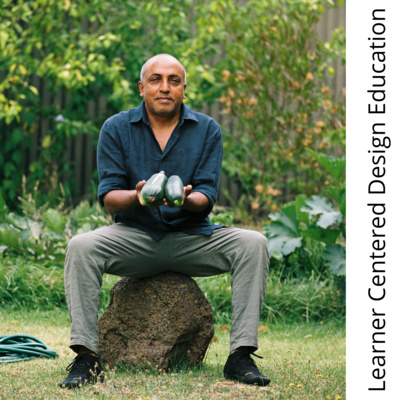
How to make a designer?
This is an episode about pedagogy. It is also a bit about how design is constructed in the contemporary in my local area.
Binaries
- Consumer Side/ Producer Side
- Destination/ Journey aka Product/ Process
- Design as Art/ Design as a Job
- City Studio/ Factory R&D aka Studio/ Lab
- Retail/ Museum
- Thing/ Service
- Local/ Exotic
- Rich/ Poor (and the middle class?)
- Theory/ Manufacture
- Gadget/ Decorative Object
Links
Learner Centered Design Education: https://rawslearn.wordpress.com/
Who is Soumitri: http://soumitri.com.au/

Beauty (Live Recording Version)
This is a live recording. I will be coming back to this episode, to ruminate and redo. That version is some weeks away.
This is an episode about Beauty. I have the book “On Beauty” by Umberto Eco sitting on my desk. Is that what triggered me to do this episode? Possibly.
Podcast structure:
Beauty in Three Parts
- Outer Beauty
- Inner Beauty
- The beauty of machines
- Essential Beauty
Insider language: The Chatter, the isms, the flipping
The preoccupation with thingness
The form of things
The essence within, the hidden
Links
Learner Centered Design Education: https://rawslearn.wordpress.com/
Who is Soumitri: http://soumitri.com.au/
Memphis: https://www.theguardian.com/culture/2001/sep/06/artsfeatures.arts
Monobloc: https://www.design-museum.de/en/exhibitions/detailpages/monobloc-a-chair-for-the-world.html
Brutalism Podcast: https://podcasts.apple.com/us/podcast/protecting-modernist-architecture-for-generations-to/id1125550898?i=1000552674089
Lisa Krohn phone: https://www.mcad.edu/events/visiting-artist-lecture-lisa-krohn
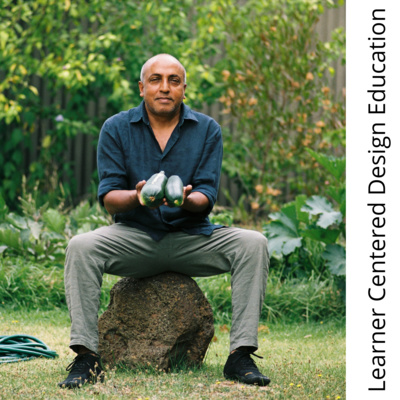
Perfection (Live Recording Version)
This is a live recording. I will be coming back to this episode, to ruminate and redo. That version is some weeks away.
This is an episode about Perfection. An instigation – aimed at students on their journey of becoming designers.
Links
Learner Centered Design Education: https://rawslearn.wordpress.com/
Who is Soumitri: http://soumitri.com.au/
CORRECTION: The Lexus car I mentioned as LFA is in fact the LC500. This is a link to an article - https://newsexplorer.net/one-of-the-best-sounding-v8s-in-production-is-from-the-lexus-lc-500-s922472.html
A Japanese Craftsman built me a shamisen: https://youtu.be/M0Ic64TPJVc
Busyman Bicycles: http://busymanbicycles.blogspot.com/
Takumi: https://global.toyota/en/newsroom/lexus/26907779.html
Temple Sculpture: https://www.nytimes.com/2005/07/22/arts/design/looking-into-the-divine-eyes-of-spiritual-sculptures.html
Birkin workshop: https://www.ignant.com/2019/11/05/an-exclusive-look-at-the-incredible-craftsmanship-behind-the-iconic-hermes-bags/
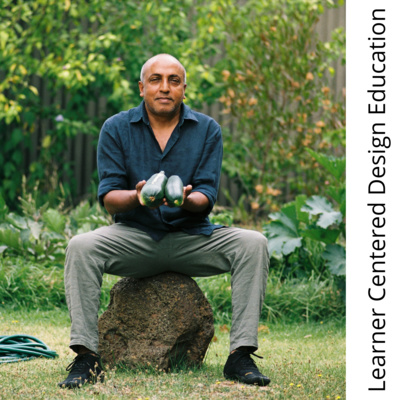
Goats with Agency (Live Recording Version)
This is a live recording. I will be coming back to this episode, to ruminate and redo. That version is some weeks away.
This is an episode about Learning. An instigation – aimed at students on their journey of becoming designers. An Australian lens specially crafted to see a very particular kind of territory and landscape of education? Maybe.
Links
Learner Centered Design Education: https://rawslearn.wordpress.com/
Who is Soumitri: http://soumitri.com.au/
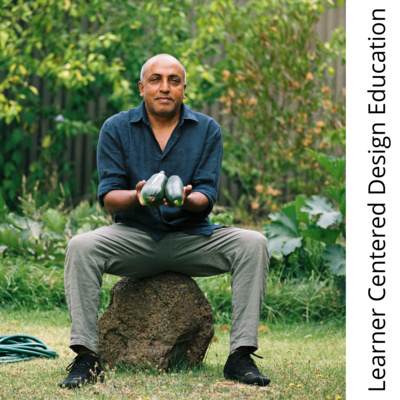
China, how I grew my love (Live Recording Version)
This is a live recording. I will be coming back to this episode, to ruminate and redo. That version is some weeks away.
This is an episode about China. A designer’s China. A Designer’s lens specially crafted to see a very particular China.
I can open a door to China. A very peculiar door. My door. My China.
Do you have a China of your own? Can you name 10 designers in China? 5 Architects? One fashion Designer?
Do you love China?
Links
Learner Centered Design Education: https://rawslearn.wordpress.com/
Who is Soumitri: http://soumitri.com.au/
La Chinoise (by Goddard) https://www.youtube.com/watch?v=Ts7HBWQXWfA
Women of the Long March: LINK
The last rose of Shanghai LINK
Balzac and the Little Chinese Seamstress: Book LINKMovie LINK
China in Africa Podcast LINK
Sinica Podcast LINK
Keywords to follow up: Nanfeng Kiln, Lights out factories, Soho China

Freedom (Live Recording Version)
This is a live recording. I will be coming back to this episode, to ruminate and redo. That version is some weeks away.
This is an episode about freedom. Freedom was the title of a book I read over the holiday period. Link below.
9.38 The Article I read out from: https://culturacolectiva.com/books/on-the-road-jack-kerouac/“Without this book we might have never had Fear and Loathing in Las Vegas, or films such as Thelma and Louise, Paris, Texas, or Easy Rider. Kerouac’s influence is such that in the biographical Light My Fire: My Life With The Doors, the band’s keyboard player, Ray Manzarek, claimed that without that book, the band might not have existed.”
12.17 Lines from the Ghost Song, by the Doors.
Links
Learner Centered Design Education: https://rawslearn.wordpress.com/
Who is Soumitri: http://soumitri.com.au/
On the Road by Jack Kerouac: LINK
“With his barbaric yawp of a book, Kerouac commands attention as a kind of literary James Dean,” the reviewer noted.
The Free World by Louis Menand: Book Review LINK
Menand is truly one of the great explainers. He quotes approvingly a lesson taken by Lionel Trilling from his editor Elliot Cohen: “No idea was so difficult and complex but that it could be expressed in a way that would make it understood by anyone to whom it might conceivably be of interest.” Menand puts his own practice to the test. He is accurate, he is insightful, and he is not a dumber-downer. It is notoriously hard to summarize Martin Heidegger’s Being and Time, structural linguistics, serial composition in music, or the formation of Great Power rivalries in the period of decolonization. Menand’s account of each is an abbreviated tour de force. His explanations work at all levels: interpretation for scholars, review for general readers, introductions for neophytes. Where another writer would take 20 pages to tell us why someone or something mattered historically, Menand does it in two.
Howl by Ginsberg: Review LINK
Ginsberg's poem was an incantatory epic – emotionally and sexually explicit and intent on exploding the anxieties of the atomic age.
Podcasts
John Cage: https://podcasts.apple.com/au/podcast/strong-songs/id1443417194?i=1000484979414
How Not Podcast, John Cage: https://podcasts.apple.com/au/podcast/how-not/id1562586787?i=1000525410531
The Reason Interview, Louis Menand Interview: https://podcasts.apple.com/au/podcast/the-reason-interview-with-nick-gillespie/id1485021241?i=1000529629177
Legacy, Jack Kerouac: https://podcasts.apple.com/au/podcast/legacy-the-artists-behind-the-legends/id1232652684?i=1000427749693
Witness Archive, Jackson Pollock: https://podcasts.apple.com/au/podcast/witness-history-archive-2012/id1003007466?i=1000377912938
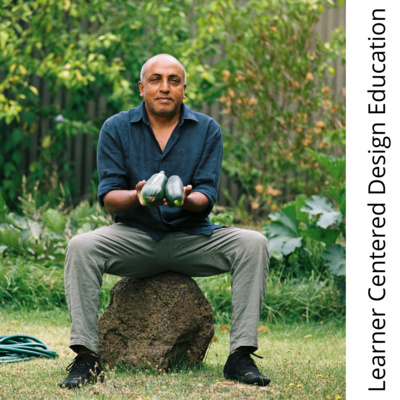
Embodiement (Live Recording Version)
This is a live recording. I will be coming back to this episode, to ruminate and redo. That version is some weeks away.
This is an episode about temperament.
The links are – further reading on this subject.
Links
Learner Centered Design Education: https://rawslearn.wordpress.com/
Who is Soumitri: http://soumitri.com.au/
Blog Post on Embodiement: https://rawslearn.wordpress.com/2021/09/24/temperament-and-embodiement/
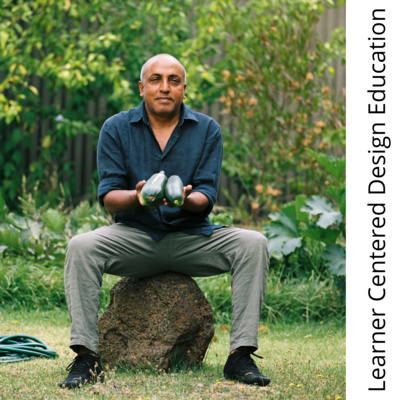
10 keys to unpack Design
I am treating design as a text - that can be interpreted. Then again I am using design as food. Which can be queried to seek its genealogy, why is it the way it is? Food is culture. Culture is the ways of a people. And here we have a package - a bundle - that can be opened to reveal. Design seen as a bundle - a thing holding secrets - can reveal the cultural construct.
As you can see I could be making a case against design as a functional, utilitarian commodity making enterprise. Design as you will see is not work, and thus is not a thing done in workplaces. It is life itself. Phew!!
Okay if so - then the bundle (bundle again) - has a key that can be used to unpack, and reveal the secrets it holds. In fact I say that there are ten keys that show design to be a constellation of ingredients. There you are - a dish madde up of ingredients. If design is food then the design of different peoples, of different places ought to be distinct. And so it is.
Yes!
- Enculturation
- Embodiement
- Temperament
- Freedom
- Beauty
- Perfection
- Japonisme
- Japandi
- China
- Designerly Knowledge
Links
Learner Centered Design Education: https://rawslearn.wordpress.com/
Who is Soumitri: http://soumitri.com.au/

Temperament (Live Recording Version)
This is a live recording. I will be coming back to this episode, to ruminate and redo. That version is some weeks away.
This is an episode about temperament. In the past I have posted in my blog about the twin essences of Embodiement and Temperament. Are these unique to design? Or am I making a place and a theme that will allow us to pivot away from the cerebral? Yes to Both.
I am making a case that being within design is a gift. That keeps giving. The managerial-isation of design and the worker-isation of the designer is a strong force in contemporary society. But it is possible to harken back, to reclaim and to channel the soul of design. That takes you to a special place.
The links are – further reading on this subject.
Links
Learner Centered Design Education: https://rawslearn.wordpress.com/
Who is Soumitri: http://soumitri.com.au/
Blog Post on Temperament: https://rawslearn.wordpress.com/2021/09/24/temperament-and-embodiement/
Artistic Temperament: https://larrygmaguire.com/artistic-temperament/
Parable of the sunfish: https://en.wikipedia.org/wiki/Parable_of_the_Sunfish
Slow Movement: https://en.wikipedia.org/wiki/Slow_movement_(culture)
Nissan’s Takumi: https://usa.nissannews.com/en-US/releases/nissan-s-legendary-takumi-four-master-craftsmen-who-hand-build-every-nissan-gt-r-engine#
Nissan Takumi (Video): https://www.youtube.com/watch?v=KMqRuN7wyvQ
Nissan GTR: https://www.nissan.com.au/about-nissan/news-and-events/news/2021/september/the-performance-icon.html
Driver’s ownership review (Goldd!!): https://www.youtube.com/watch?v=DN-dqjJjLNU
Potter Simizu Genji (Video): https://www.youtube.com/watch?v=ybb-HhSrtxA&t=738s
Genji Shimizu: http://mingart.de/albums/hokujo/
Nakashima on Pinterest (Faintvoice): https://www.pinterest.com.au/search/my_pins/?q=nakashima&rs=typed&term_meta[]=nakashima%7Ctyped

Radio Bakri: Goats with Zips (Hindi)
I was invited to deliver a lecture lecture at a Refresher course organized by HRDC, Panjab University, Chandigarh on the “Two weeks” Refresher Course (Online Mode) from March 12-25, 2022 on the theme: "Locating the Contours of Indian Modernities: Challenges and Possibilities".
This audio is a recording of my talk.
Tech: The online event was on Google Meet. I used an iPhone next to the laptop as my recording device. The editing was done on Audacity.
The links are – further reading on this subject.
Links
Learner Centered Design Education: https://rawslearn.wordpress.com/
Who is Soumitri: http://soumitri.com.au/
Youtube Radio Bakri: https://youtube.com/playlist?list=PLU7nrcTLINER4JSZVmK268tCVeqEnJxo5
Website Natkhat Ritika Project: https://sites.google.com/view/diya-jalayein/home?authuser=0
My First 6 Months Website: https://sites.google.com/view/mf6m/home
Teachers Toolkit: https://sites.google.com/view/teach-toolkit/home
James Tooley Book: https://www.amazon.com.au/Beautiful-Tree-Personal-Educating-Themsleves/dp/193970912
Freire Banking Model: https://en.wikipedia.org/wiki/Banking_model_of_education
Madras System (Monitorial System): https://en.wikipedia.org/wiki/Monitorial_System
Intensive mode of teaching: https://www.youtube.com/watch?v=Sjb2rzPr5Y4
Block teaching: https://www.youtube.com/watch?v=sYSwlldgYoE
Learning Contract: https://uwaterloo.ca/centre-for-teaching-excellence/teaching-resources/teaching-tips/tips-students/self-directed-learning/self-directed-learning-learning-contracts
Sirohi Goat: https://en.wikipedia.org/wiki/Sirohi_goat
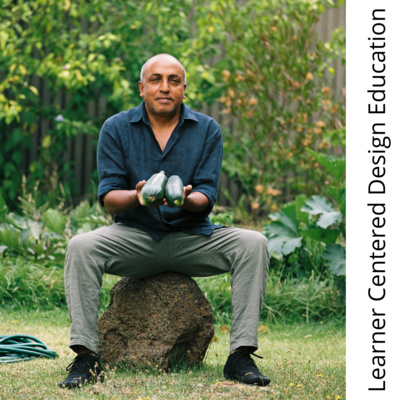
Enculturation
This is an episode about enculturation which is both the process of becoming. A process of becoming a designer. With designer tastes and a designer view. I expand on culture, taste, people an places as key aspects of developing a knowledge of ones own process of enculturation.
The links are – further reading on this subject.
Links
Learner Centered Design Education: https://rawslearn.wordpress.com/
Who is Soumitri: http://soumitri.com.au/
Bringing Home the Birkin by Michael Tonello LINK
Primates of North Avenue by Wednesday Martin LINK
Enculturation: LINK
Rites of Passage LINK
Distinction by Pierre Bourdieu LINK. Plus Youtube Links.
1. https://www.youtube.com/watch?v=th0eYWnGZ_4
2. https://www.youtube.com/watch?v=YaRu4g4_lCw
Diego Gambetta: Podcast - https://socialsciencebites.libsyn.com/diego-gambetta-on-signaling-theory and Lecture: https://www.youtube.com/watch?v=KFJQ4PIn4vA&t=1153s
The Taste Culture Reader: Experiencing Food and Drink by Carolyn Korsmeyer - https://www.amazon.com.au/Taste-Culture-Reader-Experiencing-Drink/dp/0857856987
Furniture City:
1. Shunde, Foshan - https://www.youtube.com/watch?v=hgYWfRhwUZ4
2. Lecong - https://www.youtube.com/watch?v=QvVdMDlZrr0

What is Design?
What is Design?
Can be answered in any number of ways. While many would like to give you a definition of Design or Industrial Design. I think that would be wrong. For in the process of essentialising the meaning of design - you may end up speaking about something that you want to push. Are definitions by their very nature amenable to be used for propaganda? Why wouldn't you.
Design like a pair of sneakers, is best worn. And not defined.
And just like sneakers. Design can be apprehended. Held in your hand. And design can make you feel good, cool and awesome (choose your option). If design is like food, good to consume. Then why wouldn't you?
If you are a devoted fan of this podcast, then I am feeding your addition. If you are not. A fan. Then go away.
Learner Centered Design Education: https://rawslearn.wordpress.com/
Who is Soumitri: http://soumitri.com.au/
Adrian Forty Book: https://www.amazon.com.au/Objects-Desire-Society-Adrian-Forty/dp/0500274126
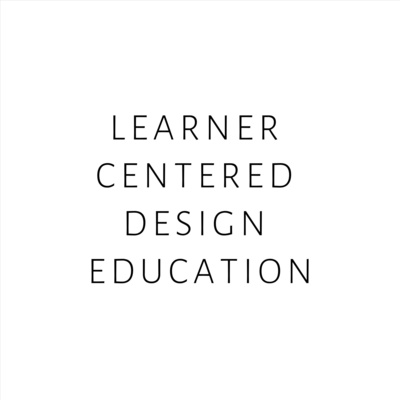
A chat with Alex Tatoulis
I have begun to speak to some young Industrial Designers in Melbourne. I have gained enough confidence with the tech, the Zoom camera, to venture into speaking with other people. And shoving the mic under their nose. I am probably not doing it right. But will keep doing it this way, or else I fear falling into the tech aspiration rabbit hole. I have escaped from the ‘indoors’ tomb like sepulchral silence of the corporate podcasts by being outdoors when I speak. Not quite Attenborough, but chill enough so that I don’t take myself too seriously.
So this is Alex. Another student I have admired and marvelled at. They can be quite amazing, the passions and the journeys of these people one encounters in university life.
Learner Centered Design Education: https://rawslearn.wordpress.com/
Alex Tatoulis: https://www.instagram.com/lxt.design/?hl=en
Princes Park Playground, Melbourne: https://www.melbourneplaygrounds.com.au/princes-park-drive-playground-carlton-north#.YfIQ2GBxVB0

A chat with Tim Denshire Key
I went across to Coburg to have an early morning chat, 8 AM, on a Monday. Tim showed me around Coburg Studios. Then we headed off to Coburg lake to have a chat.
This podcast is a first in a series of conversations I am having with an assortment of people.
Tim Denshire Key: https://www.instagram.com/tim_t_design/?hl=en
Coburg Studios: https://www.instagram.com/coburgstudios/?hl=en
Learner Centered Design Education: https://rawslearn.wordpress.com/

I got Jeff Bezos and Larry Smarr to have dinner
In my imaginary, I booked a table at a restaurant in Seattle. Canlis? Maybe. I invited Jeff and Larry to a meal. To talk about the coming together of the kinds of things they have been talking about.
This is an epistolary podcast. I speak to a former student, nay I am badgering a former student (as you do) to collaborate with me. Are not all our students agents in an ecology of the global intellect? Well if they are then the world is a community of mentats. Speaking in tongues. For more on mentats you probably need to check out the Villeneuve version of Dune.
I have been in conversation with many people about the need, nay opportunity, for us to reimagine the world. As a though experiment? Poten tally. But also as a philosophy, an ideology of transformation that imagines a utopia. That is collectively being imagined in pockets. So we collect and fill in the gaps. Doing a form of kintsugi of disparate innovations.
The question, nay nudge, is to imagine people as agents. Who are activated and make their bodies amazing. With or without tech, people have from time immemorial been making their bodies become amazing. In aesthetic ways? Yes. But also is what it can do, such as martial arts and endurance regimes. The hidden text here is the body as a well functioning entity. NOTE that I do not use words - health, illenss and disease - that can divert us for the goal of privileging the primacy of the individual and the collective. Essentially people can do a lot to make themselves more able or to make their ecosystem more conducive to producing good bodily outcomes. Just acknowledging that they do this is a useful step.
Then to reimagine enterprises - such as tech industry - to align and be supportive of the goals and challenges of people is a cause. A worthwhile project and mission to pursue.
This garbled account in the cold goes some way to open a window into a potential space of exploration.
The Intro? I place the podcast on the beach.
The outro? The sound of me crunching through snow and ice covered ground.
The Second Pancreas Project: https://sites.google.com/view/the-second-pancreas-project/home?authuser=0
Measured Man and Larry Smarr: https://www.theatlantic.com/magazine/archive/2012/07/the-measured-man/309018/
What Bezos said in 1998: https://www.washingtonpost.com/wp-srv/washtech/daily/nov98/amazon110898.htm
The Smart Home: Can It Replace Traditional Health Care? Link: https://www.verywellhealth.com/smart-home-and-healthcare-in-the-future-4157938
15 Ways To Improve Your Health Using Technology: https://www.forbes.com/sites/leebelltech/2018/03/26/the-best-health-tech-2017/?sh=145282b438df
The ubiquity of fitness-tracking technology in recent years has meant people are generally becoming more conscious about their health.
Increasing mainstream availability of sensors on wearables such as smartwatches - that are able to give us better feedback about what’s happening in our bodies - means more of us are discovering insights into our health and looking at how we can improve it. But with so many health-improving gizmos on the market, it’s not easy separating those that are truly beneficial from those that are nothing more than a gimmick.

Which School?
I made this episode after our conversation about Art Schools. It rekindled forgotten memories. I have enjoyed travelling back in time. I haven’t teased out s much of the detail, of all the things that preoccupied me. For I buried my USA and UK period of the 80s underneath a furious Italy period, then my Japanese period and finally a China period. So it is fascinating to travel back this far and remember the spirit of the times - the 80s.
Learner Centered Design Education: https://rawslearn.wordpress.com/2021/12/22/which-school/
Design Quarterly Issue: https://go.distance.ncsu.edu/gd203/?p=24570
Michael and Katherine McCoy: https://michaelmccoydesign.com/about/
Cranbrook Academy of Art: https://www.1stdibs.com/introspective-magazine/cranbrook-academy-of-art-since-1932/
Lisa Krohn Telephone: https://collection.cooperhewitt.org/objects/18648895/

On teaching creativity
In this episode I have a eulogy for my teaching mentor. He was there for me. Young man, is how he referred to me, and to all the others. Big generous, supportive and what an appetite for risk taking. All his examples, nay metaphors, would be about climbing mountains. Don't look back. Hang on! And the laugh, that wave if the hand, so many memories.
Do you remember the first time you ever taught? My first teaching assignment was to teach creativity in a School of Architecture. Did the student love it? I am sure they hated it. Maybe it was just about me learning the ropes in this particular way. But then the 1980s were a different time. The university, the college, was a place of idealism and activism. Or so I had framed it.
Learner Centered Design Education: https://rawslearn.wordpress.com/

Dare we reimagine school?
In Episode 3 - How do you teach manufacturing - I was speaking about a course I taught at IIT Delhi. I have an intro from one of the students who was in that course. I then am using that to speak an audio letter to a collaborator about a very different kind of 'how'. This is about what could be imagined as an intensive for young people, children and generally for anyone. I make the case, not very effectively, that the alignment with school is not really the point. Rather the aspirations that people have of becoming something. The becoming is a project owned by individuals. Schooling is an older manifestation from a time when we used to be paternalistic. We just haven't found the chutzpah to throw away the bath water.
Learner Centered Design Education: https://rawslearn.wordpress.com/

Dyson and the meaning of Industrial Design
This is a podcast, that serves as a note to self. I am reading Dyson's book, his autobiography "Invention: A life". This - the emergence of Dyson on the Industrial Design landscape in the early 1980s - was a significant moment at a time when I was adjusting the meanings associated with the phrase 'product design' from the way I had encountered it in engineering to this new 'design school' construct. Dyson knocked the bureau model on the head. Though not a lot of people called it out in this way. I did. But as a weird voice, had to keep silent. As you do.
The Intro continues the theme of being self deprecatory. But also a obfuscatory. For you may wonder who Rajesh Khanna is.
The BOOK, Invention: A Life LINK
Learner Centered Design Education: https://rawslearn.wordpress.com/

How do you teach manufacturing processes?
Industrial designers embedded within large mass production enterprises, design products to be manufactured within the manufacturing facilities and vendor ecosystem of that company. It is possible that designers of products need to be aware of the manufacturing considerations. Well, at least in theory. In practice however the designer is the 'artist' in that manufacturing ecology. The place is teeming with expertise; engineers, shop floor technicians and a whole host of design engineers.
It is possible that how the others behave with the designer will be determined by the context. In Italy and Japan, the designer will be given the space to imagine - and the engineer will say; "challenge me". It is possible that in some other countries this relationship is adversarial. Or at least so goes the narrative. The design student is inveigled - "You have to know"! Really?
Knowing or becoming? That is the question.
I too went to design school. After completing a five year degree in mechanical engineering. First class with distinction. Over the two and half years at design school, the teachers had zero interest in what I already knew and could do. Not okay? I think so too.
Maybe a disclaimer: 'No students were harmed in choosing to conduct education in this way'.
For images go have a look at the Blog Post here: https://rawslearn.wordpress.com/
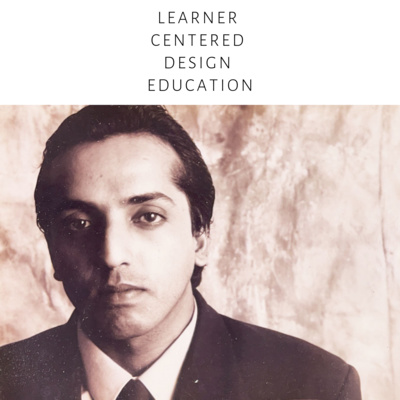
How do you design a course?
If you believe that the class is not one uniform mass that needs one inoculation jab. If you permit yourself to trust the students to educate themselves. If you are willing to spend twice, nay four times, as long doing the things you could have done in much less time. Then you need to find out who else does it this way. Who else is focussed upon what students can let themselves become. And when you find your answer. Cherish it. It will give you meaning.
Learner Centered Design Education: https://rawslearn.wordpress.com/

What is Moderation?
After the assessment tabulation is complete. There is another process - the Moderation.
I have participated in Moderation processes for about 20 years. They are a thing. Misunderstood, avoided, cancelled. They bring a lot to the academy. I am a fan of the qualitative celebration of work. Just as I am a fan of the peer peer assessment process. As a way of building academy.
Learner Centered Design Education: https://rawslearn.wordpress.com/
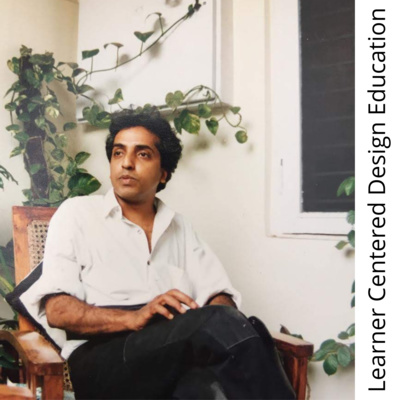
What is a Capstone Project?
My first experience of a capstone project was 39 years ago. Bachelor of Engineering, Mechanical Engineering, a group of seven of us designed, built a windmill. We then put the prototype through its paces - as an experimental test rig.
This podcast is a musing about the Capstone Project. If there are 30 million of these happening on the planet right now. If there are a lot ways to do Capstone projects. The surely there is a typology of these kinds of projects. I hint at 4 types.
More importantly I ask if the Capstone always serves its purpose as the transformative program in a student's educational and developmental journey. It was for me - even if I became a Dune tragic at the end of it.
Learner Centered Design Education: https://rawslearn.wordpress.com/
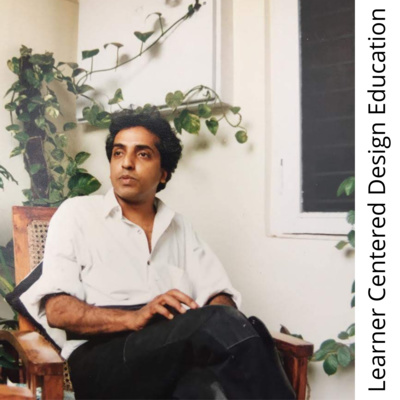
You only learn through reflection
This is a podcast targeted at a very very small cohort. This is specific to Nov2021.
It is about allowing students to realize their agency.
It is about redirecting students to focus upon their becoming.
It is about re igniting a focus upon the essential purpose for which the students and teachers assemble.
It is about remembering that the teacher is a midwife.
Midwife? Maybe you could take a look at Weimer: LINK
Learner Centered Design Education: https://rawslearn.wordpress.com/
Campaign Projects: https://campaignprojects.wordpress.com/
My Focus upon SDGs? LINK

Analytic versus Speculative, Metaphorical or Continental
Correction: I keep referring to "Philosophize this". So this is a correction. That is another show. The ABC show that I have been listening to is "The Philosopher's Zone".
The Philosopher's Zone: https://www.abc.net.au/radionational/programs/philosopherszone/
Learner Centered Design Education: https://rawslearn.wordpress.com/

Ramblings around Progressive Pedagogy
Learner Centered Design Education: https://rawslearn.wordpress.com/
The Philosopher's zone: https://podcasts.apple.com/au/podcast/philosophers-zone/id135353439?i=1000540262386

The Learner Centered Project Circa 2005
This is a meandering reflection upon the ideas we churned in the cauldron that bubbled away 15 years ago. It was a different Australia. Though the people were equally gorgeous. What of things that we set in motion? That can be a treasure hunt for you.
The Learner Centered Project received a university award in 2005. One and a Half years after commencement. It went on till 2007. The current project My First 6 Months (LINK) carries much of the dna of what is these days referred to as progressive pedagogy. My short hand, method, avoids these changing fashions in names for this kind of work. Thats it. It is just method focussed. Not content focussed.
Quote: From the Award submission text.
The Learner Centered Project (LCP)
The LCP is primarily concerned with bringing about change in the way the community of Industrial Design students and staff think about education, university life and each other. The staff within the program are committed to continually improve their pedagogic practices. Other programs in the school have also expressed a desire to try some of the innovations of the LCP.
Some of the changes brought about by the LCP to the Industrial Design program have been explicit; for example, the walls of the building have been painted red or learning contracts have been introduced to courses as a teaching strategy. Other outcomes have been implicit; for example, changes in staff attitude to their academic roles or positive responses from the program team to students articulating issues of concern. In their entirety, the complete range and depth of shifts has contributed to an overall sense of the learning environment of the program being remarkably different to what it used to be.
Approval of the changes experienced in the community is made obvious in the conversations, emails and attitudes expressed formally and informally amongst students and staff as they learn, study and work together. Satisfaction with these changes is also expressed in the increased amount of student activity and energy that is now present in the program building.
Anecdotal feedback from students certainly indicates an awareness and appreciation of the changes that enable them to have:
“full creative freedom” “a relaxed environment”
“a fun and approachable atmosphere”
“the ability to go where we want within the program” and to
“learn and experience a whole new level of design”
Since the LCP has been introduced, students sense a positive change in the dynamic of the Industrial Design community and are supportive of this shift, as indicated in the following student comment:
“I cant’ wait to see where we go and what we achieve as a group and as individuals”.
Full text: https://rawslearn.wordpress.com/2021/10/30/the-learner-centered-project-2003-2007/
Acknowledgements:
Barbara de la Harpe: I was only meeting you for a coffee as part of my induction. You heard something in what I was saying. You supported me. So you were the awesomest. Thank you.
Helen McLean: You carried the whole project on your shoulders. We just came along for the ride.
John Milton: You held the whole community - all students and staff - in the meeting.
Liam Fennessy: You were our 'activism' focussed agent.
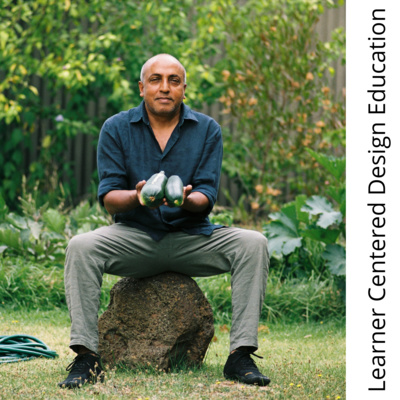
The 8 things to do inside an Industrial Design PhD
And my audience? "Deja Vu !!! I was transported to your class in Back studio. Loved it. Thanks. Looking forward to more." (from Detroit)
- Lit review
- Ethics
- Project management - NOTION
- Database - Airtable
- Website
- Blog
- Exhibition
- Public Lectures - colloquia
ADDITIONAL
- RSS feed - Feedly, PaperLi
- Twitter feed - tweetdeck
Learner Centered Design Education: https://rawslearn.wordpress.com/
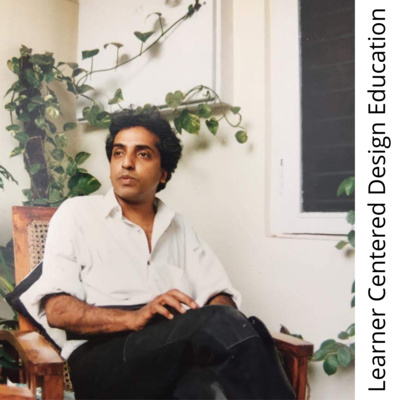
Raja, Venice on a Holiday
This one is for you, Raja.
You and I would sit outside the Youth Hostel. Remember us laughing at the tours? Cold wind, and cross the water from St Marcos. We saw tour groups - being led by their guides. The Backpackers and the Tour Groups.
You are no longer with us. A young life. No more. You came from Holland and I travelled from India. It was our Italy tour. A time of endless conversations.
Dead Poets Society: Link
A Few Good Men: LINK
Learner Centered Design Education: https://rawslearn.wordpress.com/

Design is what Designers do.
Design is what designers do #1
Hey girl,
When I graduated from Mechanical Engineering, I opted to stay in India.
Most of the others in my batch?
Headed off to the US.
In India I then did postgrad. At NID, the national institute of design in Ahmedabad. I elected to stay in India and ended up in Delhi, starting my own studio.
My whole cohort? My group of friends?
They headed off to the US.
5 years after graduation, just like Vineet and Abhishek, I too did a 6 month stint at Hitachi. From my NID days - I had been deep into Japanese literature and Cinema. My close friend’s aunt was a professor of Japanese at a University. In my New Delhi of the 80s, Japan was everywhere. Then, I reached Japan. And my brain exploded. It was transformative. The secret sauce? In the factories I interned in, the Japanese goal, was quite simple. It was perfection.
Everywhere I went in Japan I would encounter a conversation about the source of their dna. One country that they considered as a source was India. For the spiritual side to Japanese life, there was much to be learned from Nalanda and Buddhism. Like many Japanese, Hirano san my local Japanese healer in Melbourne too looks forward to his trips to Bihar, in India.
For their cultural side, for their writing, calligraphy, the ceramics, for their notion of perfection? For the past 1000 years or more the source has been China.
Today we are in a global period that we Designers (and others) refer to as Japandi. It is where Japanese aesthetics meets Scandinavian Aesthetics. So you have Muji and then you have Ikea. Then you have all the other Japan obsessed like Frank Lloyd Wright, Charles Rennie Mackintosh, Steve Jobs of Apple and the CEO of Oracle.
Japandi may be ending! It probably surely is.
But the question that remains is? If you are looking for the most mind expanding design work in the contemporary period.
The most beautiful? Yes.
The most risk taking? Yes.
If you are really looking for the most mind expanding design work in the contemporary period on this planet – where should you look?
You know, everyone knows my answer to that. So I shall not say. Haha.
But hey while you make up your mind. Here is a link for you. Look up Culture Trip on your browser.
Click on the magnifying glass, the search icon, and ask it a question. Say ‘designers in India’. Then sit back and have a feast.
Remove India and put in a city. Let us say - umm Zagreb, Hangzhou, Chennai, Bandung, Johor, Ulan Bator, Santiago, Joberg, Lagos, Baghdad?
Haha.
Enjoy growing up.
Lots of love from your Uncle Sam
Blog Post: https://rawslearn.wordpress.com/2021/10/26/design-is-what-designers-do-1/
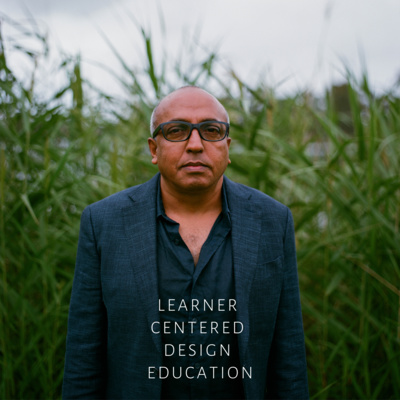
The Ethics Application
Because I work within hospitals I do ethics applications for my projects. Because I have designed projects, written up their workplan, pitched them to hospital teams and executed the projects, I have learnt a lot about Ethics Applications. Because I supervise PhD students, Masters Students and Honours students - I say to them; "Hey, would you like to learn how to do an ethics application?". "So that you can put it into your CV and go looking for part time research work?"
I focus upon 'project design' aka how to design a project and how to describe the design as a workplan.
For the nitty gritty details of ethics the youtube Playlist I have made does a good job to get your learning to a good place.
My YouTube Playlist: https://www.youtube.com/playlist?list=PLU7nrcTLINEScnDKD2s56Ie95rBt94B_D
Outro music, Iain Soumitri: https://iainsoumitri.com/

Soumitri speaks with Howard Erry
This is a recording also available, since 2016, in a blog authored by Howard Erry. I am speaking here about a research project - I Love Blended Learning. This is what was in those days the School of Architecture and Design. I was at that time the Deputy Dean of a Design Cluster (Industrial Design, Interior Design and the Master of Design Innovation and Technology). The focus of the project was on activating teaching staff to use more digital and online affordances in their courses. The focus was also upon programs, to get them to have a deliberate toolkit and format of how they populate their Learning Management System (LMS). The LMS at that time was Blackboard.
Soumitri Varadarajan: http://soumitri.com.au/
The outro music is by Iain Soumitri - https://www.instagram.com/soumitristudio/

Method - The Literature Review
Imagine you are given just 2 hours to assemble an endnote bibliography for your (PhD) research project. This bibliography in addition is required to have 250 references. You are playing the role of a ‘research assistant’ in a high pressure research organisation – aka working for a ‘think tank’.
When doing a lit review you need to 'set up the bookshelf'
I use the book shelf analogy to describe - buying a shelf from ikea (setting up endnote with categories, tags and groups), going to the bookshop/s to browse (aka downloading bibliographies from the internet - aka "bibliography of socially engaged art", and peering into the bibliographies in dissertations), asking people to suggest books to buy (asking people about books and articles, authors they recommend).
Goals/ targetsThis search is best done with four goals - two above the line and two below the line:
ABOVE the line1. Philosophy: To get books/ works on the philosophy of ... (20)
2. The sociology of - aka ethnographic accounts (20)
BELOW3. Field of Research: what are the works of others, case studies, artists, works, genres, ... in the research question area, (50)
4. Your Project: Your Reflections, your readings/ what are the texts from your past .. that have informed you up to this point. (50)
Finding REFSThen comes the task of buying the books and putting them into the bookshelf (this is done by inserting the book titles into the RMIT lib site and saving the RIS, reference, for that book - so you dont have to type into endnote), the buying of books (finding new references for your endnote) continues through the PhD and life after.
Organise the referencesOnce the bookshelf is full of books - a typical bookshelf may contain about 300 books, and many more articles (so an endnote ref list for a PhD can "start" with between 250 to 400 references) - the books needs to be organised. Some people organise alphabetically (or by color of spine) – a research ‘bookshelf’ is best organsied by themes. Multiuple overlapping themes – aka a since ref sits in multiple themes.
Say each shelf is a theme - so 5 shelves 5 themes/ 6 themes. These themes are the 'smart groups' in endnote. So you can teg references - insert the theme name into keywords. Once done you have a well organised library for your PhD.
Now you can start reading.
Intro: Silk, BBC Drama
Youtube: Importing excel into Endnote LINK

रेडियो बकरी #7: क्या फ्लिप कर दिया जाए
10 प्रश्न 10 questions
- फ्लिप क्या होता है?
- थॉट एक्सपेरिमेंट क्या होता है?
- टीचर क्या चीज़ है?
- क्या स्कूल और पढाई सही है? जैसे के चल रहा है?
- लीन करिकुलम क्या होता है?
- गोल क्या है?
- क्या गलती करना ख़राब होता है?
- क्यों सोचें?
- क्या बेहतर है - कंटेंट या मेथड?
- टीचिंग पोर्टफोलियो क्या होता है?
Learner Centered Design Education: https://rawslearn.wordpress.com/

रेडियो बकरी #6: क्या आप कंप्यूटर सीख सकते हैं बिना टाइपिंग के?
Learner Centered Design Education: https://rawslearn.wordpress.com/

रेडियो बकरी #5: क्या सिलाई से साइंस सीखी जा सकती है?
The idea that the student has grown up as a goat herd and has played with goats. That she has an emotional attachment with goats. That she will miss the goats when she is at school. Is a powerful strength that provides a channel into activating the student's agency.
Intro voice Zain.
Learner Centered Design Education: https://rawslearn.wordpress.com/

रेडियो बकरी #4: क्या खाना बनाने के माध्यम से गणित सीखी जा सकती है?
Learner Centered Design Education: https://rawslearn.wordpress.com/